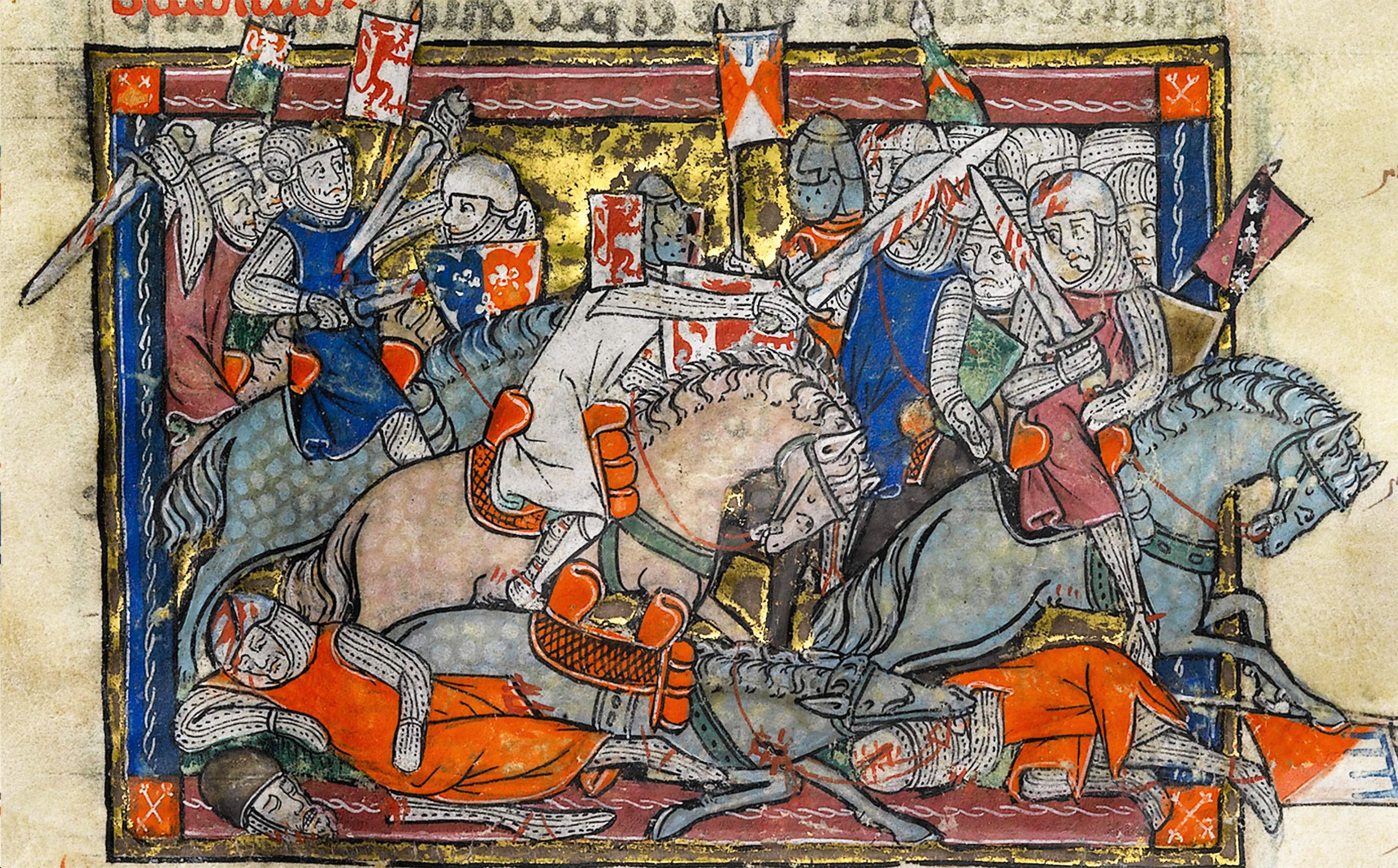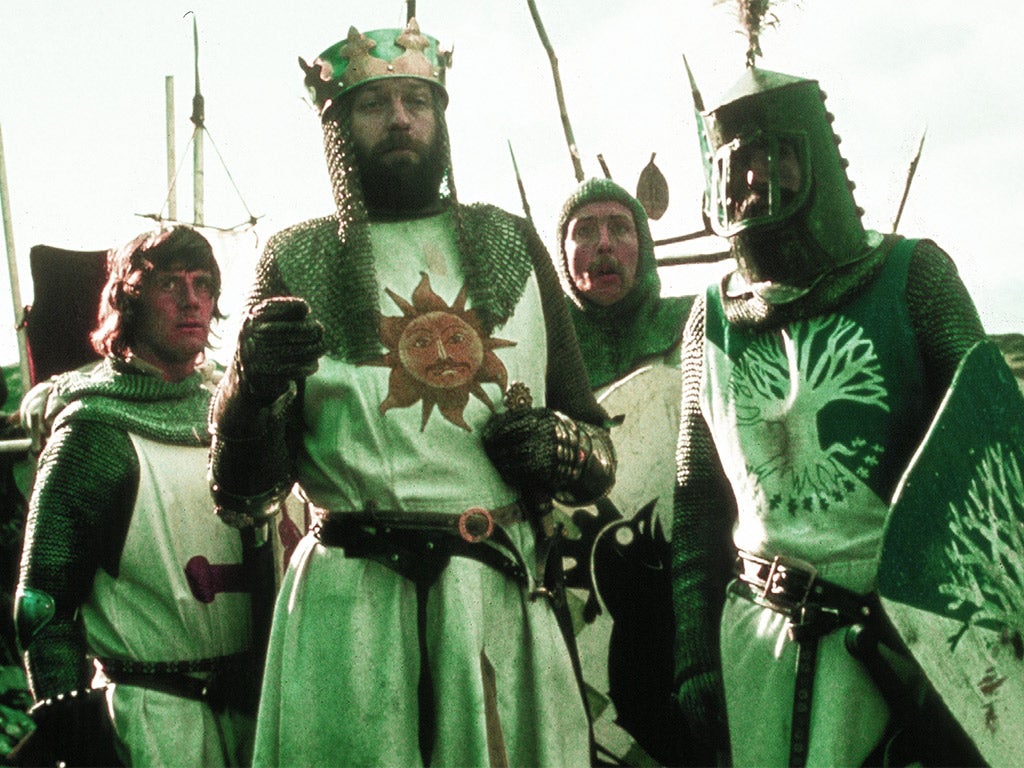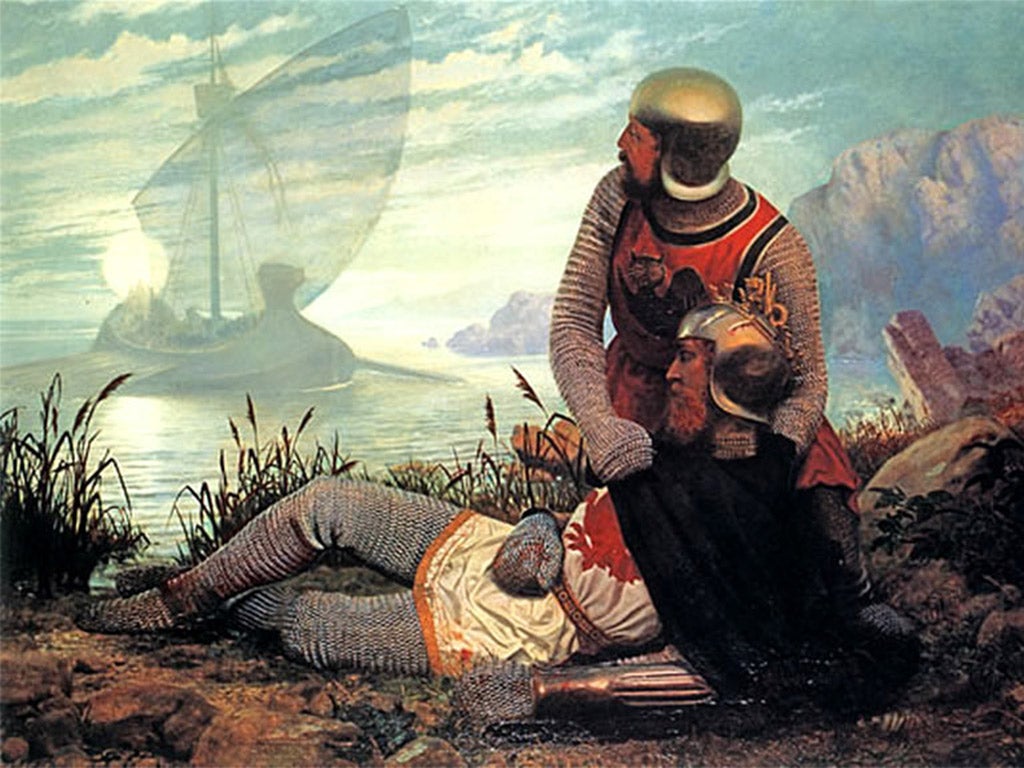King Arthur: Legendary figure was real and lived most of his life in Strathclyde, academic claims
Exclusive: Dr Andrew Breeze says he did exist – but was a general, not a king

Your support helps us to tell the story
From reproductive rights to climate change to Big Tech, The Independent is on the ground when the story is developing. Whether it's investigating the financials of Elon Musk's pro-Trump PAC or producing our latest documentary, 'The A Word', which shines a light on the American women fighting for reproductive rights, we know how important it is to parse out the facts from the messaging.
At such a critical moment in US history, we need reporters on the ground. Your donation allows us to keep sending journalists to speak to both sides of the story.
The Independent is trusted by Americans across the entire political spectrum. And unlike many other quality news outlets, we choose not to lock Americans out of our reporting and analysis with paywalls. We believe quality journalism should be available to everyone, paid for by those who can afford it.
Your support makes all the difference.He was married to Guinevere, held court over the Knights of the Round Table, wielded the sword Excalibur and, following his final battle with the traitor Mordred, was laid to rest at Avalon. At least that is how the mythological story of King Arthur goes.
The reality, according to new research by a British academic, is that the legendary British figure of the 5th and early 6th century did exist but was a general rather than a monarch, fought all his battles in southern Scotland and Northumberland – and lived most of his life in Strathclyde.
Dr Andrew Breeze, a professional philologist and Celticist from the University of Navarre in Spain, based his findings on a Latin chronicle called The History Of The Britons, written in the ninth century by the Welsh monk Nennius. This lists the names of nine places where Arthur defeated his enemies, but until now nobody has been able to say exactly where they were.
Dr Breeze said that although the locations have been “endlessly debated”, he now believes he has located every single one, thereby proving his background.
“In some cases I agree with earlier scholars, in accepting Glein as the River Glen, Northumberland, for example,” Dr Breeze told The Independent. “But other identifications are quite new, such as taking the ‘Dubglas’ as the River Douglas near Lanark, or putting the ‘city of the Legion’ at the east end of the Antonine Wall, and not at Chester or York [as others have done].”
Dr Breeze said the pattern presented by the new identifications is “startling”. Instead of Arthurian battles occurring up and down Britain, as others have claimed, there is a concentration in southern Scotland and the Borders.
He said an ancient battle in Badon, likely to be in Wiltshire – part of the West Country traditionally associated with the “king” – was “not to do with Arthur at all”.
Dr Breeze said: “Early Welsh vernacular tradition knows nothing of it, even though it was a triumph over the English. The upshot is revolutionary. Arthur thus now steps from legend into history – specifically the history of Scotland.
“He will have been a Briton of southern Scotland, fighting all his battles there; but he was not fighting the English. His enemies were other British peoples, around Edinburgh and Carlisle. He was not of course a king. He will have been a brave general who soon became a legend.”

His research, The Historical Arthur and sixth-century Scotland, will be published in the University of Leeds journal Northern History on Thursday.
It is often thought that Arthur was of Roman descent and died fighting invaders from the Angles or Saxon tribes. Dr Breeze said that the pattern of the battle names on the map accompanying his research proves that Arthur was a North Briton who was a chieftain or general in the early sixth century.
He believes Arthur was most associated with Strathclyde because the only battles there are on its borders, when he was defending the kingdom from other North Britons.
Dr Breeze said: “The evidence means all the textbooks will have to be changed. We can forget about Arthur holding back the Anglo-Saxon invaders at Badon in about the year 500.
“We can also forget about him as a Roman cavalry leader, moving his forces up and down Britain. What we have instead is a Romanised Briton of the North, apparently operating out of Strathclyde, fighting other North Britons in the 530s, and being killed at Camlan (Castlesteads on Hadrian’s Wall) in 537, according to the Welsh annals.”

Not everyone is convinced, however. Thomas Owen Clancy, professor of Celtic at Glasgow University, has cast doubt on the findings.
He said: “The search for a historical Arthur in the North is doomed by the sources. As early as we can see, Arthur – in the very text that Dr Breeze fixes on, the early ninth century History of the Britons – is already a figure of legend and literature, rather than history. The list of battles looks to have come from a later poem; it is not a contemporary chronicle.”
But Dr Breeze is not deterred. “New ideas tend to get an icy reception,” he said, “and it would be a poor researcher who couldn’t defend a new idea, if it is any good.”
Myth or reality? The history of King Arthur
The sparse historical background of King Arthur is gleaned from various sources, including the Annales Cambriae, the Historia Brittonum, and the writings of Gildas the Wise, a sixth-century British monk.
The King Arthur of legend is largely derived from Geoffrey of Monmouth’s “fanciful” 12th-century History of the Kings of Britain.
Monty Python have the 12th-century French writer Chrétien de Troyes to thank – he added Lancelot and the Holy Grail to the story, which began the genre of Arthurian romance that became a significant strand of medieval literature. The focus in the French stories shifted from King Arthur himself to the Knights of the Round Table.
Following centuries of disinterest, Alfred, Lord Tennyson revived the Arthurian legend with his 1832 poem The Lady of Shalott. His Arthurian work reached its peak with Idylls of the King, which reworked the narrative of Arthur’s life for the Victorian era.
King Arthur, the 2004 film starring Clive Owen and Keira Knightley, is one of many modern-day feature films to focus on the legend.
Join our commenting forum
Join thought-provoking conversations, follow other Independent readers and see their replies
Comments